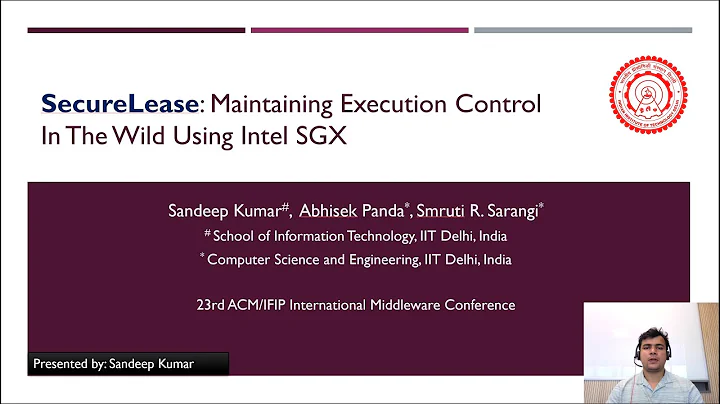Xilinx Legal Clash: Engineer vs. FPGA Giant
Table of Contents
- Introduction to XILINX Controversy
- Understanding the Situation
- What Led to the Controversy?
- XILINX's Stance
- Engineer's Perspective
- Implications on Education and Creativity
- Threat to Educational Content
- Impact on Engineers and Creators
- Ethical Considerations
- Corporate Power Dynamics
- Fair Use and Intellectual Property
- Community Response and Advocacy
- Engaging with XILINX
- Calls for Change
- Exploring Alternatives
- Diversification in Chip Selection
- Advocacy for Openness
- The Future of Education and Innovation
- Navigating Corporate Influence
- Fostering a Supportive Environment
- Conclusion
- The Call for Collaboration
- Ensuring Accessibility and Fairness
Introduction to XILINX Controversy
The recent uproar surrounding XILINX, a prominent FPGA chip company, has sparked debates within the engineering community.
Understanding the Situation
What Led to the Controversy?
At the core of the issue lies a clash between a content creator and XILINX's legal team. The controversy erupted when an engineer released a Tutorial video on FPGA programming featuring XILINX's logo alongside its competitor, Altera.
XILINX's Stance
XILINX swiftly responded, citing unauthorized use of their logo and alleging substantial harm to their brand. Consequently, they demanded the removal of the video, raising concerns about corporate censorship and intellectual property rights.
Engineer's Perspective
For many, XILINX's actions seem disproportionate. The engineer behind the tutorial lamented the stifling effect on educational content creation. This incident underscores broader implications for accessibility and innovation.
Implications on Education and Creativity
Threat to Educational Content
The XILINX controversy highlights the precarious position of educational content creators. The fear of legal repercussions may deter individuals from sharing knowledge freely, hindering the democratization of learning.
Impact on Engineers and Creators
Engineers and creators face the brunt of corporate overreach. The prospect of legal action looms large, discouraging experimentation and collaboration. This stifling environment undermines the spirit of innovation and inquiry.
Ethical Considerations
Corporate Power Dynamics
The clash between XILINX and content creators underscores broader power dynamics in the tech industry. Corporations wield immense influence over discourse and creativity, raising questions about accountability and fairness.
Fair Use and Intellectual Property
The controversy also reignites debates surrounding fair use and intellectual property rights. While companies have a legitimate interest in protecting their brand, the boundaries of permissible use warrant careful consideration.
Community Response and Advocacy
Engaging with XILINX
The engineering community has rallied against XILINX's heavy-handed approach. Calls for dialogue and transparency resonate, urging the company to reconsider its enforcement strategies.
Calls for Change
Advocates emphasize the need for a more nuanced approach to copyright enforcement. Collaborative efforts between corporations and content creators could foster a more conducive environment for innovation.
Exploring Alternatives
Diversification in Chip Selection
In response to XILINX's actions, engineers may explore alternatives in chip selection. Diversifying options mitigates dependence on a single provider and reduces vulnerability to corporate overreach.
Advocacy for Openness
Advocates champion openness and accessibility in technology. Embracing open-source platforms and collaborative initiatives fosters a culture of knowledge sharing and mutual support.
The Future of Education and Innovation
Navigating Corporate Influence
As technology continues to evolve, navigating corporate influence remains a pressing concern. Striking a balance between innovation and corporate interests requires ongoing dialogue and collective action.
Fostering a Supportive Environment
Building a supportive ecosystem for education and innovation necessitates concerted efforts from all stakeholders. Empowering creators and safeguarding intellectual freedom are paramount in shaping a more equitable future.
Conclusion
In conclusion, the XILINX controversy serves as a wake-up call for the tech community. By fostering dialogue and advocating for change, we can uphold the principles of accessibility, fairness, and innovation.
Highlights
- XILINX Controversy: Unveiling the clash between corporate interests and educational freedom.
- Community Advocacy: Mobilizing against corporate overreach and advocating for transparency.
- Ethical Considerations: Navigating the complexities of intellectual property and fair use.
- Diversification in Technology: Embracing alternatives to mitigate dependence on single providers.
- The Future of Innovation: Charting a path towards a more inclusive and collaborative tech landscape.
FAQ
Q: What sparked the XILINX controversy?
A: The controversy stemmed from a tutorial video featuring XILINX's logo alongside its competitor, Altera, prompting legal action from XILINX's legal team.
Q: What are the implications of the controversy on education?
A: The controversy raises concerns about the stifling effect on educational content creation, potentially hindering the democratization of learning.
Q: How can the engineering community respond to corporate overreach?
A: Advocating for dialogue, transparency, and fair use principles can help address concerns surrounding corporate overreach and censorship.
 WHY YOU SHOULD CHOOSE TOOLIFY
WHY YOU SHOULD CHOOSE TOOLIFY

























